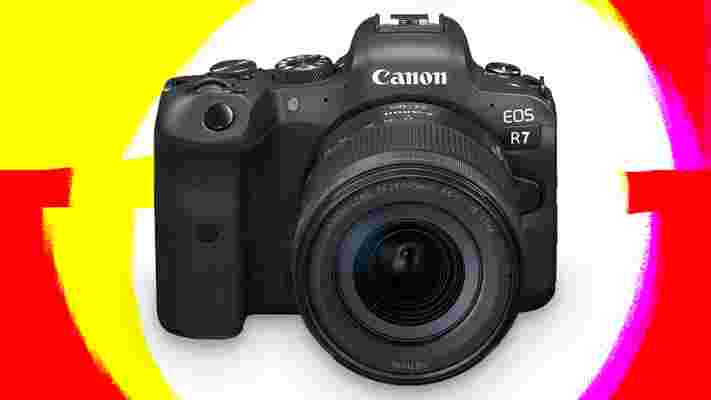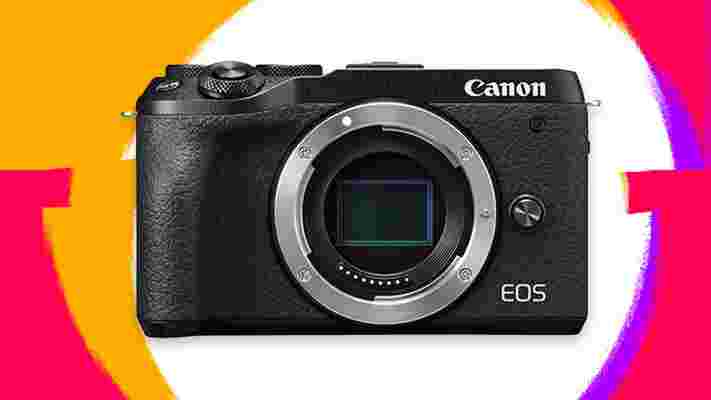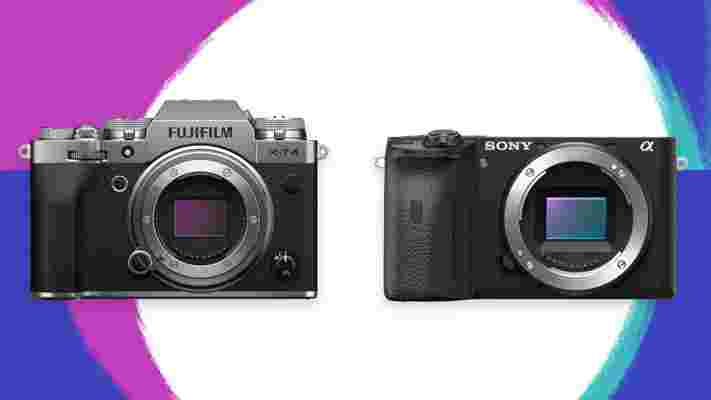Big changes look to be coming to the iPhone range, with the design rumored to be getting an overhaul for the iPhone 14 Pro , while with the iPhone 15 Pro we could see a huge improvement to the cameras.
Specifically, the iPhone 15 Pro could have a periscope camera. That’s a camera design that allows for much longer-range zoom than smartphones are otherwise capable of, going from the 3x optical zoom of the iPhone 13 Pro to potentially up to 10x or beyond.
This claim comes from Jeff Pu (via MacRumors ), an analyst with a middling track record for Apple leaks. As such, we’d take this with a pinch of salt, but Pu isn’t the only person to have made this claim. Previously both Ming-Chi Kuo (an analyst with a good track record) and The Elec (a South Korean tech news site) have said the same.
None of these sources have said which iPhone 15 models will have this feature, just that at least one will, but if any do it would be the Pro handsets – so the iPhone 15 Pro Max and likely also the iPhone 15 Pro. It’s the sort of feature that Apple probably wouldn’t bring to its cheaper models until a while later, if at all.
Pu doesn’t say anything else here, but periscope cameras have been a long time coming to the iPhone, as a number of Android phones – such as the Samsung Galaxy S21 Ultra – already have one, with optical zoom ranges of up to 10x.

Analysis: a big zoom is a big upgrade
While a 10x zoom camera isn't a must-have feature for most people, it does allow you to take decent-quality photos of things that you can’t get close to, such as details high up on a building, a boat out at sea, or a skittish animal that you have to keep your distance from.
Arguably a 2x or 3x zoom would be more frequently used (and that sort of zoom level would likely be offered in addition to 10x), but it's hard to beat the wow factor of a long-range zoom – and for some users it would be a major selling point.
Figure skating live stream: how to watch Beijing 2022 online for free, women's free skate but will there be a medal?
All eyes will be on figure skater Kamila Valieva today at the 2022 Winter Olympics as the ROC athlete competes for first place in the women's individual figure skating. Currently leading the field, there could well be no medals ceremony at all if Valieva finishes in the top three after controversy surrounding her positive drugs test - quite the pity that this side show could well take away from the spectacle itself but expect double the drama because of it. Here's how to watch a figure skating live stream wherever you are.
There are five figure skating events at Beijing 2022: men’s and women’s singles, pair skating, ice dance and mixed team. With the individuals and pairs performing an explosive array of salchows, lutzes, axels and spins. The dancers are judged based upon the difficulty of their routine and their overall skating ability, performance and execution.
The US consistently has one of the deepest figure skating teams at the Winter Olympics, but Russia is usually in the medal hunt, and Japan has recently risen as a new figure skating powerhouse.
All figure skating events at Beijing 2022 will take place at the Capital Indoor Stadium and the events take place from February 4 to 19 (full schedule below). Below you'll find all the information on how to watch a figure skating live stream from the Beijing 2022 Winter Olympics, wherever you are in the world.
Beijing 2022 figure skating: dates and times
February 4
Team Event - Men Single Skating - Short Program: 1:55am GMT, (Feb 3) 8:55pm ET, 5:55pm PT
Team Event - Ice Dance - Rhythm Dance: 3:35am GMT, (Feb 3) 10:35pm ET, 7:35pm PT
Team Event - Pair Skating - Short Program: 5:15am GMT, 12:15am ET, (Feb 3) 9:15pm PT
February 6
Team Event - Women Single Skating - Short Program: 1:30am GMT, (Feb 5) 8:30pm ET, 5:30pm PT
Watch a figure skating live stream with a VPN
There are so many events going on at the Winter Olympics that not every country's TV and streaming coverage shows every discipline. If you can't get the figure skating where you are, then you can use a VPN to tune into a live stream from another country – something you might need to do if travelling abroad.
By downloading and installing a VPN , you can effectively trick your computer into thinking that it's back at home in the same country as the streaming service that you're trying to access. That way you can enjoy your home coverage without having to find an illegal stream - assuming you comply with the broadcaster's fine print, of course.
Use a VPN to watch the figure skating from anywhere
How to use a VPN
Using a VPN is as easy as one-two-three...
1. Download and install a VPN - as we say, our top choice is ExpressVPN
2. Connect to the appropriate server location - open the VPN app, hit 'choose location', eg: select 'US' for Peacock, or 'UK' for BBC, 'Australia' for 7Plus or 'Canada' for CBC.
3. Go to the broadcaster's live stream - so that might be 7Plus , CBC , BBC iPlayer or Peacock TV .

Figure skating live stream: how to watch Beijing 2022 online in the UK

USA figure skating live stream: watch every Beijing 2022 event on Peacock

Figure skating live stream: how to watch Beijing 2022 online in Australia
Figure skating live stream: how to watch Beijing 2022 online in Canada
Watch the figure skating: live stream Beijing 2022 in New Zealand
Beijing 2022 Winter Olympics schedule and events
Canon EOS R7 news, leaks, predictions and what we want to see
The Canon EOS R7 is expected to be an important camera, particularly if your budget doesn't stretch to the latest full-frame mirrorless flagships. That's because it's rumored to be Canon's first RF-mount camera with an APS-C sensor. This could make it an affordable, but powerful, way to get into Canon's mirrorless system, with a camera that's primed for wildlife, sports and video shooting.
A word of warning: it's still early days for Canon EOS R7 rumors. So far, there haven't been any major leaks, and it appears that the knock-on effects of the pandemic on supply chains and chip shortages has potentially pushed Canon's launch schedule back a little. But rumors of Canon's first APS-C camera have persisted, and reliable sources suggest it could even be the camera giant's next big launch.
So what can expect from the rumored EOS R7? Right now, all of Canon's EOS R cameras – including the Canon EOS R5 and Canon EOS R6 – have full-frame sensors. But like the Canon EOS 7D Mark II DSLR, it's expected to combine pro features with an APS-C sensor. This means it'd be able to use the same lenses as full-frame models, without a mount adapter. An EOS R7 would also almost certainly spell the end for Canon's EOS M series, at least in the form we currently know it.
The EOS R7 means Canon’s ongoing mirrorless camera line-up might ultimately be arranged a more like Sony’s. Full-frame and APS-C mirrorless cameras would share the same mount, but there may be separate lens series designed for APS-C and full-frame models.
We would not be surprised to see existing M-mount lenses altered to suit this change, and a (hopefully low-cost and low profile) adapter to let EOS M camera owners upgrade without too many headaches. But what about the camera itself? Here’s what we know so far, based on the latest leaks and rumors.
In February 2022, the reliable Canon Rumors said that " a source with a pretty solid record" had revealed that "the Canon EOS R7 is likely the next camera to be announced" for its EOS R system. Interestingly, the source added that the EOS R7 launch "could come as early as March of this year".
These claims followed previous speculation, from December 2020, that Canon EOS R7 prototypes were being tested in the wild by photographers. The speculation from Canon Rumors' sources hinted that the camera looked "nearly identical to the Canon EOS R6."
Since then, expectations have been tempered a little by suggestions that the pandemic-related manufacturing challenges and ongoing semiconductor shortages had pushed Canon's 2021 plans back a little. But from the latest rumors, its plans seem to be back on track.

We don’t have any pricing details for the EOS R7 yet, but the camera may be aimed at the sort of crowd who'd have once bought a Canon EOS 7D Mark II . That camera cost $1,799/ £1,599 when it arrived in 2014. Still, that was clearly a long time ago, so we shouldn't assume that the Canon EOS R7 will arrive at a similar cost.
Sony’s top APS-C camera, the Sony Alpha A6600 , originally cost $1,400/ £1,449 / AU$2,079 and that seems like a sensible steer on how much we might expect to pay for the Canon EOS R7. It all depends on how many of the features it inherits from the Canon EOS R6 .
An earlier rumor in June 2021 suggested that the Canon EOS R7 could be part of a trio of new mirrorless Canon APS-C cameras , sitting above the Canon EOS R8 and entry-level EOS R9. If true, this may push the Canon EOS R7 towards the higher-end, $2,000-mark, in order to leave room for the EOS R9, but this is pure speculation at this stage.
While Canon is yet to announce the Canon EOS R7 or any of its features officially, we do have a few credible leaks to give us some hints about its most important characteristics.
The Canon EOS R7 is likely to have a 32.5MP APS-C sensor. Canon already has experience designing sensors of this size and resolution. The Canon EOS M6 Mark II from 2019, for example, also has a 32.5MP APS-C sensor.
This new camera will likely come with several notable improvements that'll see it rise a league or so above the EOS M6 Mark II, mind. The one that's most in the balance is five-axis image stabilization (IBIS). Over in Sony land, you only get this in the top-end Alpha A6600, but the rumors so far are mixed on whether or not it'll be included on the EOS R7.

If IBIS did make the cut, it'd likely to increase the EOS R7’s weight (and cost) compared to the lower-end EOS R8 and R9, making it a similar size and shape to the Canon EOS R6. That said, the EOS R8 it rumored to be a “vlogger” camera, so that too would certainly benefit from IBIS.
The EOS R7's expected video specs include a max capture mode of 4K/60p, or 120fps at 1080p resolution for slo-mo. This would be a notable improvement over the 4K/30p of the Canon EOS M6 Mark II and Sony A6600 .
The Canon EOS R7 is also expected to be able to capture 10-bit color video internally, to match the excellent Fujifilm X-T4 . Canon has real work to do here, as the Canon EOS M6 II is not in the same league as its Sony or Fuji rivals for 4K video detail.
We also hope to see Canon leapfrog over Sony’s IBIS for effectiveness in video, and the use of two-system stabilization — digital plus IBIS — would be a good idea.
However, these leaks also suggest the Fujifilm X-T4 may retain a lead for slo-mo, as it can shoot 1080p at up to 240fps, where the EOS R7 is expected to stick to 120fps. Canon may be relying on its higher-resolution sensor appealing to stills shooters who want extra detail. And it no doubt will.
We don’t yet know how much this reasonably high resolution will affect burst shooting speeds. But, as ever, we can look for clues in previous cameras.

The Canon EOS M6 Mark II has the same resolution but manages a fairly impressive 14fps with autofocus, or 30fps using a cropped 17.9MP Raw Burst mode. This is a little slower than the 20fps of the lower-res Fujifilm X-T4 (which can also shoot crops at 30fps).
We do have a reason to expect an improvement. The EOS R7 is reported to use a version of the Digic X processor, which would be an upgrade from the DIGIC 8 of the Canon EOS M6 Mark II . This is not a two-generation gap, suggested by those figures, just a single generational leap. The number nine is considered unlucky in Japan, and it’s not unusual for Japanese companies like Canon to gracefully skip over '9' generation names.
This means burst shooting it likely to sit somewhere between 14fps and 20fps, and a higher-speed crop mode will probably feature.
The Canon EOS R7 will be “directly aimed at sports, wildlife and videography” according to a source cited by Canon Rumors , and so far it seems to fit the bill. A new processor should also help the speed of subject-detection autofocus, whether the focus ‘subject’ is an eye, a face or an animal. The actual focus system will depend on the sensor, and we don’t yet know if we’ll see a major upgrade from the 143 phase detect points of the EOS M6 Mark II.
Aside from variations in IBIS across the new rumored three-model range — EOS R7, EOS R8 and EOS R9 — we don’t really know what else will separate the models. They are likely to share the same sensor, leaving aspects like rear screen style and resolution, control layout and EVF quality to supply the rest.
We hope to see a 3.69-million dot EVF, minimum, on the Canon EOS R7. We also think that to expect the step-up resolution, 5.76 million dots, is probably unrealistic.
If this is to be a reasonably serious videographer’s camera we’d like to see a fully articulated screen. And the step-down Canon EOS R8 could use a 180-degree flip-up screen instead, although this would have knock-on effects on the contours of the camera’s top. A flip-up screen isn’t much use if there’s a big EVF mound up there.
Canon’s approach to EOS R7 lenses is one of the most important factors here, though. The camera will be able to use lenses made for Canon’s full-frame mirrorless cameras, but will there be dedicated lighter lenses designed for these smaller APS-C cameras?
There should be. While you won’t get the cropping and vignetting you’d see when using an APS-C lens on a full-frame camera, because you’re using all of the sensor but part of the lens, dedicated EOS R7 lenses could use smaller lens elements. And this means they could be smaller, lighter, and often cheaper, as a result.
If Canon does indeed go down this route, let’s hope these lenses have quiet focusing, as it could be one way for Canon to appeal to videographers and YouTubers over Fujifilm’s system.
This isn't something that Canon necessarily needs to tackle at full speed, though. You can already get hold of the reasonably-priced RF 50mm f1.8 and RF 24-105mm, and the whole appeal of the APS-C Canon EOS R7 is likely to be avoiding spending full frame-style money on your camera equipment.
The Canon EOS R7 should, in theory, mark a sort of rebirth for Canon’s APS-C cameras. It’s a chance for the company to leap ahead of Fujifilm and Sony, potentially for both stills and video shooters.
However, it's still very much a rumor at this stage and one that's been slightly clouded by recent speculation that Canon is developing its cheapest-ever full-frame camera . If those credible rumors are true, and a $799 full-frame successor to the Canon EOS RP does arrive in 2022, then it would slightly weaken the case for APS-C models for the Canon RF-mount.
That said, the Canon 7D Mark II was always more of a specialist camera than an all-rounder like the EOS RP, and it's likely that an EOS R7 would follow in that spirit, offering a compelling blend of speed, build quality and features that a $799 full-frame is unlikely to match.
If the latest rumors about a March 2022 launch for the EOS R7 are true, we won't have to wait long to find out about if it'll indeed offer those kinds of features and take on the likes of the Fujifilm X-T4. We'll be keeping an eye out for further Canon EOS R7 rumors and reports, so look out for updates to this page for the latest news.